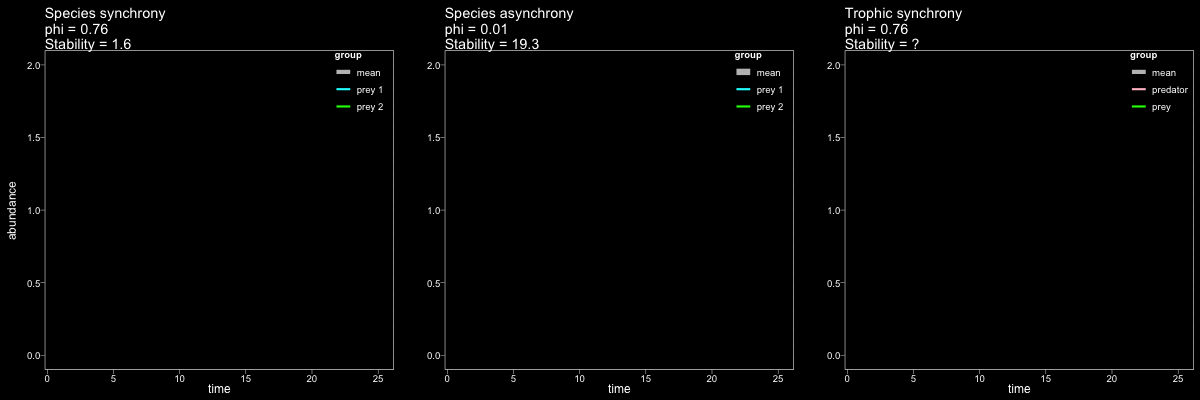
Asynchrony and stability in marine systems
What leads to ecosystem stability and resilience? This question is a key focus of contemporary ecology. Asynchrony, when temporal fluctuations among species or populations lack coherence, can be a key indicator of ecological stability. My PhD work focuses on the drivers of asynchrony in natural ecological systems. While the “portfolio” or “insurance” effects offered by taxonomically and environmentally diverse systems have been well established in theoretical studies and controlled experiments, applying these concepts to natural systems that are inherently variable has been an important hurdle to understanding their utility for assessing stability and resilience. Moreover, the majority of this work has focused on assessing asynchrony and stability among functionally similar taxa (e.g., competition among perennial grasses) and rarely considers [a]synchrony in multi-trophic systems (e.g., predator-prey dynamics).

The broad goals of this work are to (1) determine attributes that contribute to species and spatial asynchrony at multiple organizational and spatial scales in natural systems, (2) explore variation in synchrony between competitive versus consumptive species interactions, (3) operationalize information about the drivers of stability in natural systems for restoration and conservation practices.
Influence of habitat structure on species interactions
Habitat attributes (e.g., forest density, substrate rugosity) can influence what types of organisms occupy habitat and how those organisms interact with eachother. Some of my past work has evaluated how biogenic habitat structure, rather than species identity can influence fish community composition, as well as how abiotic structure can mediate consumer-resource dynamics leading to variation in community trajectories. However, these effects are likely dependent on a variety of exogenous (e.g., temperature variation) and endogenous (e.g., population density-dependence, food availability) factors, perhaps leading to complex and non-linear effects of structural attributes on species interactions. This area of research is very exciting with many recent contributions from our group and other marine researchers! More to come!
